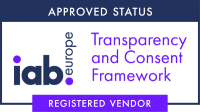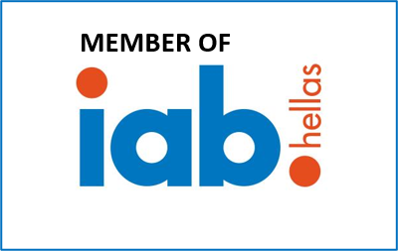Any form of business activity implies risks. Affiliate marketing is no different – it is full of challenges with pretty serious consequences for one’s budget and reputation.
As you have already guessed, we are talking about ad fraud that might impact each player in the chain – product owners, affiliate marketers, networks, and customers.
Today, we will discuss the most common types of affiliate fraud and ways to deal with them. ADEX knows what to do with any kind of ad fraud and we will eagerly share our insights and experience with you.
So, what is affiliate fraud?
Let’s start with the basics. Affiliate fraud is a misleading activity that violates the affiliate program conditions. There are dozens of ways to cheat from both sides – as an affiliate marketer and as an offer owner, while problematic situations can also happen between affiliates themselves.
Marketers usually resort to such illegal actions as fake views and clicks, fraudulent card payments, VPN and Proxy, etc. Their purpose is pretty obvious – cheaters want to generate commissions and get paid by stakeholders for the work they never did.
Still, affiliate marketers also get cheated. In the mildest scenario, they risk losing their time without getting paid, while in the worst one they might lose both – time and money. Let’s discuss some cheating patterns from both sides in more detail.
How do affiliates commit fraud?
So here is a list of the most common schemes ADEX used to encounter:
- Invalid traffic
Of course, bots are classics of ad fraud. In affiliate marketing schemes, they produce fake traffic to create false impressions on ads. As a rule, dishonest affiliates mix bots in real traffic, making it far from pure. Product owners pay money for impressions, but their ads turn out to be inefficient.
Bots are extremely advanced these days – they perform human-like actions that are hard to distinguish from real users. The trickiest ones learned to pay with stolen credit cards online, which is a new level of digital cheating. Unfortunately, such payments usually get blocked and bring nothing to advertisers, as well as blur the statistics and distort the campaign results.
- VPN and Proxy
Here is another extremely popular fraud scheme widely used by affiliates – fake locations established with the help of VPN and Proxy. As you know, clicks and impressions from Tier 1 countries are usually more expensive than those from the rest of the world. VPN is a tool for a perfect crime here – affiliates activate the program to change the source of impressions they deliver. As such, relatively cheap impressions from India turn into pretty expensive ones from the USA.
- Forbidden content
Also, affiliates tend to break the rules and create pre-landers with forbidden content. Most networks and offer owners have limitations regarding creatives and discourage illegal grips. This might include adult content, “scary” ads, and various unethical tricks. As for the latter, some affiliates use irrelevant creatives and misleading promotions, which never ends with conversions. In such a situation, offer owners lose money, but also end up with a ruined brand image.
How do affiliates get tricked?
However, affiliates are not the only ones who cheat – offer owners and affiliate networks also might be dishonest. From their side, the most common schemes are:
- Bot traffic from providers
For affiliates, there are two main working models – CPM (сost per mille or else – cost per thousand) and CPA (сost per action). In the first model, offer owners pay affiliates for each thousand of brought users, while in CPA affiliates get paid for concrete actions, be it clicks, impressions, registrations, purchases, etc.
The aim of an affiliate is to buy pure traffic, so bots can be extremely harmful for his campaign. Say, he uses a CPM model and stumbles at fraudulent actions. Consequences are not very pleasing – he has already paid for traffic and if it turns out to be fake or partly fake, our affiliate will lose money. With a CPA model, fraud is also pretty harmful since affiliates get paid upon completion of users actions. Bots are smart enough to complete those actions, so affiliates risk losing their time to test and tune the campaign up, while these efforts will be in vain.
- Stolen commissions
Some product owners create their own affiliate links to steal the commissions. It usually happens through exit pop-ups that offer free stuff or discounts to visitors to keep them on the site and evoke actions. That’s an acceptable marketing move, unless product owners suddenly use another payment processor right for this discount page. It is done to avoid crediting an affiliate – such dishonest owners give huge discounts on the backs of payments intended for them.
Which verticals are the most prone to ad fraud?
As our experts claim, the riskiest offers are those that suppose user registration without a necessity to make payments. They are the most vulnerable to bots able to perform fake desired actions and this type of fraud is the most widespread in the world of affiliate marketing.
Even though any vertical is not 100% safe when it comes to ad fraud, these ones require your special attention:
- Gambling
- Dating
- Extensions
- Surveys
Affiliate marketing newcomers should be especially careful when working with such offers.
How to avoid and fight affiliate ad fraud?
Ad fraud needs immediate and thoughtful response – the faster you detect it, the less problems you are likely to face. ADEX has a couple of strategies to share:
- Up-stream testing
First and foremost, affiliate marketers are recommended to test their offers right at the start. The early test excludes further frustration.
With the help of the ADEX system, you can check your traffic sources right away and see if there are suspicious zones and slices (say, platform+GEO or browser+GEO). Together, we can distinguish fraudulent activity and deactivate dangerous sources at a stroke. No lost time or stranded investments.
- Check your links
Also, as an affiliate marketer, you may also check your links manually to make sure that a product seller doesn’t bogart your commission. Follow the link and then click the order or download button on the sales page. If it works properly, you will easily find your affiliate ID with most affiliate networks on the page.
- Detailed user analysis
Also, our tools carefully analyze users data by numerous parameters, like VPN usage, their browser, behavior, location, and more. As such, detecting each concrete fake visitor becomes possible.
- Fraudulent Traffic Redirect
Another anti-fraud solution of ADEX allows you to send all the suspicious traffic away from your landing pages. Fraudulent Traffic Redirect heads bots to the blank page or anywhere else (as you set it) and your landings stay free from fake impressions.
- Claim Reports
If for some reason you didn’t manage to detect bots beforehand and they damaged your campaign already, there is still a solution. ADEX has a Claim Reports feature to help you tailor detailed reports, prove that you have been cheated, and ask for a refund.
For a CPM model, our reports will help affiliates demand their money back in case they accidentally bought invalid traffic. For a CPA model, we can help you get a refund for particular fraudulent conversions, as it is possible to detect each of them with ADEX.
The best thing about Claim Reports – they are tailored in the real time, you don’t have to wait for one to take shape.
Summing up
Fraudsters are omnipresent – whatever sphere of digital marketing you are in, be ready to fight them. Whether you are an affiliate marketer or product owner, make sure to keep an eye on your campaign stats to detect cheaters and protect yourself from them.
Now you know which schemes are the most widespread in the affiliate industry, but what is more – you are aware of how to strike back. Rely on us – ADEX is always here to support you and help you get rid of annoying bots!


